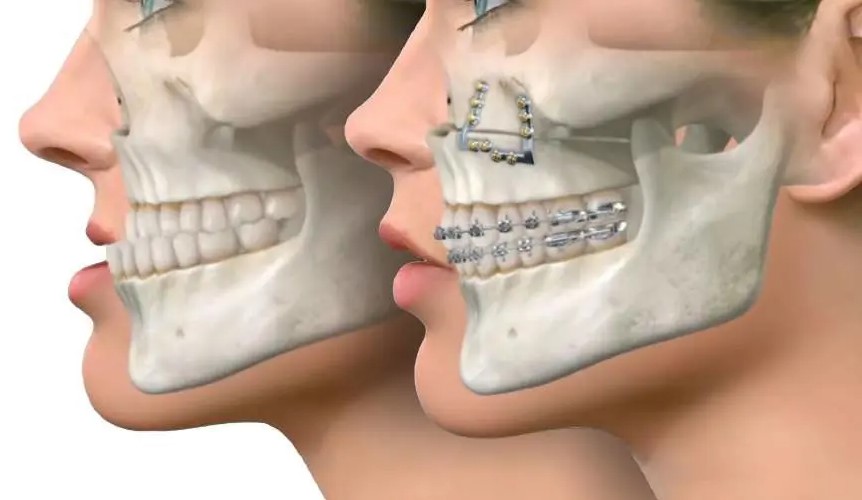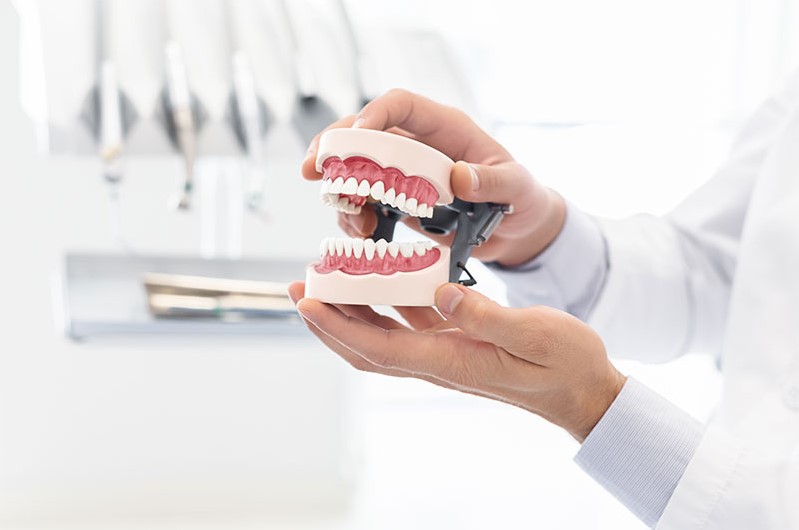Journal
What Does Double Jaw Surgery Correct?
2024-03-29
Facial Contouring

Double jaw surgery, also known as two-jaw or orthognathic surgery, is a moderately complex surgical procedure designed to correct a variety of skeletal and dental irregularities in the upper and lower jaws. This surgery not only enhances facial aesthetics but also improves functional aspects such as breathing, chewing, and speech. In this blog post, we will discuss the intricacies of double jaw surgery, the conditions to correct the jaw, the process of the procedures, the recovery process, and the potential benefits it offers patients.
Understanding Orthognathic Issues
Orthognathic issues refer to misalignments or discrepancies in the positioning of the upper and lower jaws, which can result in functional impairments and aesthetic concerns. Malocclusion, derived from "mal" meaning bad, and "occlusion" referring to bite, denotes an abnormal alignment of the upper and lower teeth. There are three primary classes of malocclusion: Class I, II, and III, ranked from least to most severe.
Overbite (Class II Malocclusion)
An overbite manifests when the upper jaw extends too far forward, resulting in the upper teeth overlapping the lower teeth vertically. Various factors can contribute to the development of overbite, including prolonged use of pacifiers or thumb sucking during childhood, as well as habits like nail biting in adulthood. However, genetics predominantly influence its occurrence.
Untreated overbites can lead to oral health complications, including jaw pain, tooth erosion, and gum disease. Furthermore, if left unaddressed, overbites tend to worsen over time. The gap between the upper and lower teeth gradually widens, exacerbating existing issues and potentially necessitating additional treatment.
Underbite (Class III Malocclusion)
Conversely, an underbite arises when the lower jaw protrudes forward, resulting in the lower teeth extending beyond the upper teeth when the mouth is closed. While underbites can have a genetic predisposition, other factors such as prolonged pacifier use, thumb sucking, mouth breathing, and tongue thrusting may contribute to their development.
As individuals age, underbites often worsen, posing risks to dental health. This includes enamel damage, heightened susceptibility to tooth chipping or breakage, and an increased likelihood of bacterial infections within the oral cavity.
Crossbite
Crossbite refers to the misalignment of one or more teeth, where the upper teeth sit inside the lower teeth. This misalignment can occur at the front or sides of the mouth and is associated with tooth wear, gum disease, and bone loss. Over time, it can cause the jaw to shift to one side, resulting in the gradual development of an asymmetrical facial structure.
Open bite
Open bite is when the top teeth and bottom teeth do not come together or There is no overlap of the teeth leading to them looking "open." Open bites can be caused by either tooth position, jaw position, or a combination of both. People sometimes have an open bite because of a problem with their jawbone.
Facial Asymmetry
Almost everyone has some degree of facial asymmetry; however, some cases are more noticeable than others. For some, the asymmetry lies in the jaw, which can result in an even more uneven appearance.

The Role of Double Jaw Surgery
Double jaw surgery is a highly specialized procedure aimed at correcting these orthognathic issues by repositioning the upper and lower jaws to achieve proper alignment and balance. The surgery is typically performed by an oral and maxillofacial surgeon in collaboration with an orthodontist to ensure optimal outcomes.
Pre-surgical Evaluation:
- X-rays
- CT
- Blood test
- Impressions of your teeth to create a dental model and wafers
- Teeth scan
Surgical Procedure:
Double jaw surgery is performed under general anesthesia in a hospital setting. The surgeon makes carefully planned incisions inside the mouth to access the underlying jawbones. Depending on the specific corrections needed, the surgeon may perform procedures such as:
Maxillary Osteotomy: Involves repositioning the upper jaw (maxilla) by making precise cuts and repositioning the bone segments to correct issues such as overbite or open bite.
Mandibular Osteotomy: Addresses lower jaw (mandible) misalignments by repositioning the lower jawbone segments, commonly used to correct underbites or facial asymmetry.
V-line surgery: Genioplasty and angular jaw correction are commonly performed together with double jaw surgery to improve facial harmony and balance.
Dental braces: In most cases, braces are done before and/or after double jaw surgery to improve the teeth alignments and asymmetry.
Recovery Process: Following double jaw surgery, patients typically require a period of recovery, during which they may experience swelling, bruising, and temporary discomfort. A liquid or soft diet is often recommended initially, gradually progressing to a regular diet as healing progresses. Patients are advised to follow post-operative instructions diligently, including proper oral hygiene and attending follow-up appointments with the surgical and orthodontic teams.

Benefits of Double Jaw Surgery
Double jaw surgery offers a range of benefits beyond cosmetic enhancement, including:
Improved Facial Symmetry: By correcting jaw misalignments and facial asymmetry, double jaw surgery can enhance facial harmony and balance, leading to a more aesthetically pleasing appearance.
Enhanced Dental Function: Proper alignment of the jaws improves bite function, allowing for more efficient chewing and speaking. This can alleviate issues such as difficulty biting, chewing, and pronouncing certain sounds.
Relief from Temporomandibular Joint (TMJ) Disorders: In some cases, orthognathic surgery can alleviate symptoms associated with TMJ disorders, such as jaw pain, clicking or popping sounds, and limited jaw movement.
Boosted Self-Confidence: Addressing orthognathic issues can have a profound impact on a patient's self-esteem and confidence, enabling them to smile, speak, and interact with greater assurance.
Double jaw surgery is a transformative procedure that offers both functional and aesthetic benefits to individuals with orthognathic issues. By correcting jaw misalignments and improving facial harmony, this surgery can significantly enhance quality of life and overall well-being. However, patients need to undergo thorough evaluation and consultation with a qualified surgical and orthodontic team to determine if they are suitable candidates for the procedure. With careful planning and expert execution, double jaw surgery can yield life-changing results for those affected by orthognathic issues.
Read more About Double Jaw Correction in Korea.
Back


